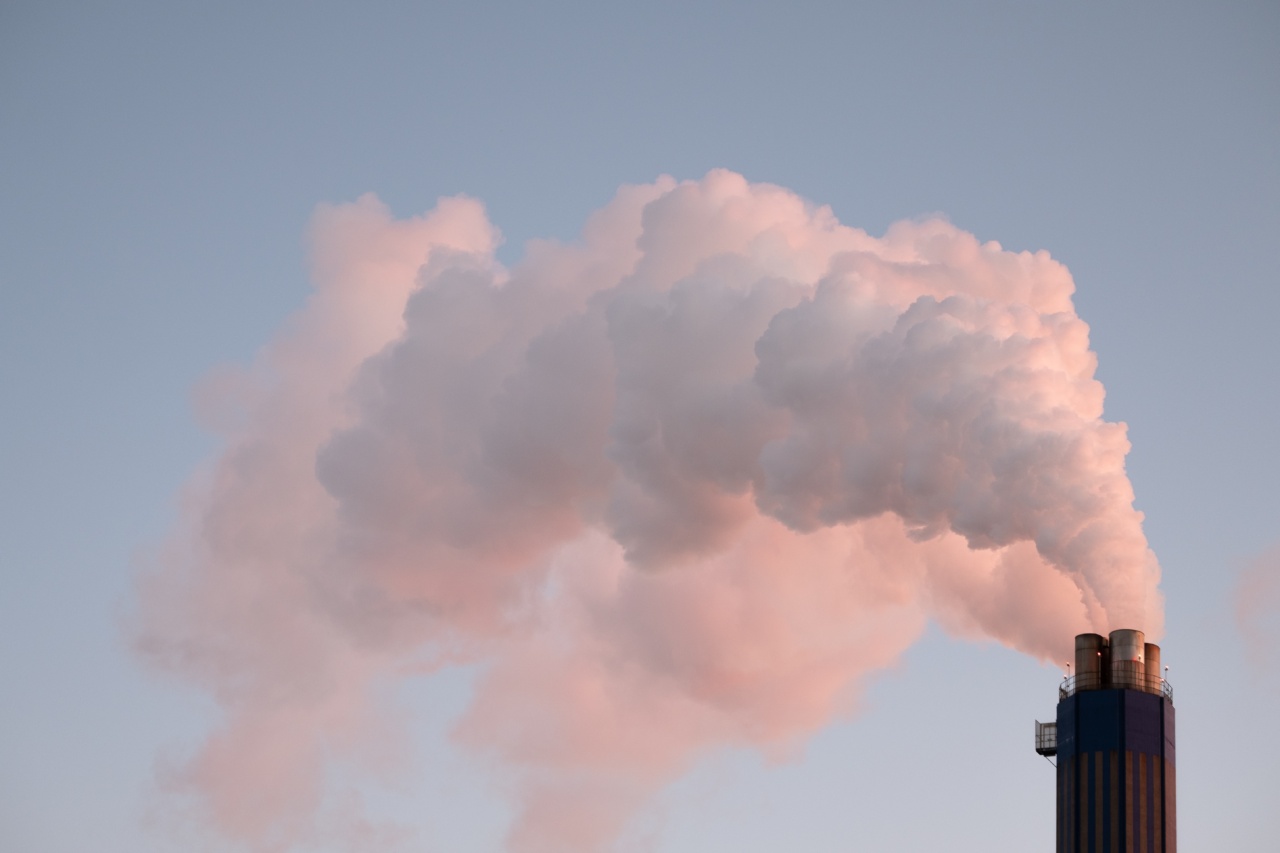Cancer has been one of the leading causes of death around the world. Despite tremendous progress in modern medicine, the rise in cancer cases cannot be ignored.
Although different factors can cause cancer, environmental pollution is one of the primary causes of increasing cancer cases. In the process of industrialization and modernization, several chemicals have been released into the environment steadily; these harmful chemicals are widely used in industrial and commercial products increasing cancer risk.
This article will highlight thirty harmful chemicals in our environment that increase cancer risk.
1. Asbestos
Asbestos is a group of naturally fibrous minerals, widely used in the construction industry. It is known to have carcinogenic effects on the lungs, and exposure to asbestos can lead to lung cancer and mesothelioma.
2. Lead
Lead is used in paints, batteries, and other industrial products.
Environmental exposure to lead increases the risk of developing several types of cancer, including lung, brain, and breast cancer, and lead exposure has also been associated with leukemia.
3. Benzene
Benzene is a carcinogenic chemical that is commonly used in a wide range of industrial products, including plastics, rubber, and resins.
It is a volatile organic compound that can quickly vaporize into the air, which can expose individuals to its toxic fumes and increase their cancer risk.
4. Formaldehyde
Formaldehyde is a chemical used as a preservative in many household products. It is also widely used in construction materials such as particleboard, plywood, and fiberboard.
Formaldehyde exposure has been linked to several types of cancers, including leukemia, brain, and lung cancers.
5. Chromium
Hexavalent chromium (CrVI) is a carcinogenic chemical that is used in several metal-plating processes and can also be found in certain dyes and pigments. Exposure to this toxic chemical can cause lung cancer, nasal cancer, and gastrointestinal cancer.
6. Vinyl Chloride
Vinyl chloride is a synthetic chemical used in the manufacture of plastics. Chronic exposure to this toxic chemical can increase the risk of liver cancer, angiosarcoma, and brain cancer.
7. Radon
Radon is a naturally occurring radioactive gas that is formed from the decay of uranium in soil, rock, and water.
Radon exposure is the second leading cause of lung cancer after smoking and can also increase the risk of developing other forms of cancer, including leukemia.
8. Arsenic
Arsenic is a naturally occurring element found in the earth’s crust and is known to cause cancer in humans.
Arsenic can contaminate groundwater, and long-term exposure to arsenic in drinking water increases the risk of developing skin, bladder, and lung cancers.
9. Polychlorinated biphenyls (PCBs)
PCBs are synthetic chemicals used as coolants and electrical insulators in electrical equipment. It has been banned in the United States, but it is still present in the environment.
PCBs exposure can increase the risk of developing liver cancer and lymphoma.
10. Nickel
Nickel is a chemical element that can be found in different forms, including alloys, plating, and batteries.
Chronic nickel exposure can increase the risk of lung, nasal, and throat cancers, and nickel compounds have been classified as carcinogenic to humans by the International Agency for Research on Cancer (IARC).
11. Cadmium
Cadmium is a metal that is used in industrial processes such as plating, pigment production, and batteries. Cadmium exposure can lead to an increased risk of lung, prostate, and breast cancers. It is classified as a carcinogen by IARC.
12. Perchloroethylene (PCE)
PCE is a synthetic chemical used as a solvent in dry cleaning, degreasing metals, and manufacturing process. PCE exposure can cause kidney cancer and non-Hodgkin’s lymphoma.
13. Dioxins
Dioxins are highly toxic chemicals released from incinerators, manufacturing plants, and other industrial sources. Exposure to dioxins can increase the risk of skin, lung, and lymphatic cancers.
14. Atrazine
Atrazine is a herbicide that is widely used in agriculture and can contaminate drinking water. Exposure to atrazine can increase the risk of developing ovarian and prostate cancers.
15. Trichloroethylene (TCE)
TCE is a chemical used in industrial cleaning processes, degreasing, and metal processing. TCE exposure has been associated with the development of liver cancer, kidney cancer, and non-Hodgkin’s lymphoma.
16. Benzidine
Benzidine is a chemical used in the production of dyes, and it is also found in some rubber products, textiles, and plastics. Benzidine exposure can increase the risk of bladder cancer and pancreatic cancer.
17. Carbon tetrachloride
Carbon tetrachloride is a popular cleaning solvent and degreaser. Carbon tetrachloride exposure has been associated with the development of liver cancer, kidney cancer, and non-Hodgkin’s lymphoma.
18. 1,3-butadiene
1,3-butadiene is a chemical used in the production of synthetic rubber. It also occurs naturally in cigarette smoke and gasoline fumes. Exposure to 1,3-butadiene has been linked to higher risks of lymphoma, leukemia, and lung cancer.
19. Ethylene oxide
Ethylene oxide is a highly toxic chemical used to sterilize medical equipment, spices, and cosmetics. It can also be found in some pesticides. Ethylene oxide exposure has been found to increase the risk of breast cancer and lymphoma.
20. Polycyclic aromatic hydrocarbons (PAHs)
PAHs are produced by the incomplete burning of fossil fuels, wood, and other organic materials. PAHs can be found in air, water, soil, and food, and exposure to PAHs can lead to lung and skin cancers.
They are also associated with higher risks of gastrointestinal and bladder cancers.
21. Formaldehyde (2-Butoxyethanol)
Formaldehyde (2-Butoxyethanol) is a widely used industrial solvent in cleaning products, paint, and varnish. Formaldehyde (2-Butoxyethanol) exposure can increase the risk of lymphoma and leukemia.
22. Styrene
Styrene is a chemical used in the production of resins, plastics, and synthetic rubbers. Exposure to styrene has been found to cause leukemia, lymphoma, and lung cancer.
23. Herbicides
Herbicides are chemicals used to control the growth of unwanted plants, and they are widely used in agriculture. Some herbicides such as glyphosate have been linked to the development of non-Hodgkin’s lymphoma.
24. Insecticides
Insecticides are chemicals used to kill insects and are commonly found in household pesticides. Organophosphate insecticides have been linked to the development of brain cancer, leukemia, and multiple myeloma.
25. Pesticides
Pesticides are chemicals used to control or repel pests such as insects, rodents and fungi. The exposure to pesticides can lead to the development of different types of cancers including breast, prostate, lymphoma and leukemia.
26. Tobacco smoke
Cigarette smoking contains around 70 known carcinogens. Smoking is the leading cause of several types of cancers, including lung, throat, and bladder cancers.
27. Formaldehyde (Paraformaldehyde)
Formaldehyde (Paraformaldehyde) is a preservative used in many household products, including cosmetics, personal care products, and clothing. Paraformaldehyde exposure has been associated with the development of leukemia and brain cancer.
28. Chlorinated solvents
Chlorinated solvents are widely used in dry cleaning, metal cleaning, and many industrial products. Exposure to chlorinated solvents has been associated with the development of multiple myeloma, lymphoma, and leukemia.
29. Diesel exhaust
Diesel exhaust is a complex mixture of particulate matter and gases produced during the burning of diesel fuel. Exposure to diesel exhaust has been linked to lung and bladder cancers.
30. Nitrosamines
Nitrosamines are carcinogenic chemicals that are formed when nitrites interact with amines. Nitrosamines are found in many cured and processed meat products and can increase the risk of stomach and colorectal cancers.
Conclusion
Environmental pollution is a significant risk factor for the development of cancer. The above thirty chemicals are just a few of the hazardous substances polluting the environment and causing a dangerous impact on human health.
Reducing or eliminating our exposure to these harmful chemicals should be a priority. The government and industries should work together to ensure the protection of our health and environment. By creating awareness and implementing measures to control pollution, we can ensure a healthy and safer future.



























